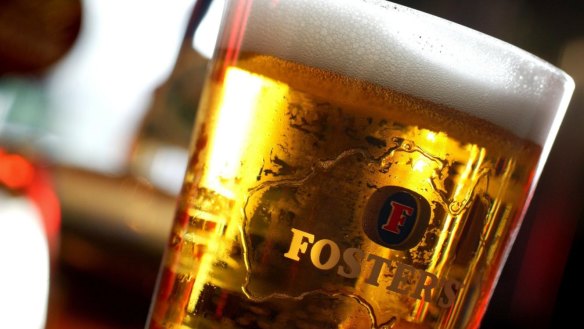Drink up – it looks like beer is good for you

In ancient Sumeria, around 4000 years ago, they took their beer very seriously. Severe penalties, up to and including death, awaited anyone who offered up under-strength or over-priced ale.
With wine the only other contender, beer is probably the oldest purposely made intoxicant in history. The Sumerians, who lived around what is modern day southern Iraq regarded it as a medicine as much as an after-work quaff. Indeed, it is prominent in the Epic of Gilgamesh, civilisation's first epic poem, as a transformative and humanising substance.
All of which goes to show that beer has always been as much about the stories that surround it as well as its taste and effects.
Today, in Australia, those stories are almost always negative. Over-consumption and binge drinking are serious issues that produce multiple problems. Attempts to mediate these tragic and expensive outcomes understandably colour the discourse.
This is unfortunate in some ways, because all the bad news and cautionary tales obscure another story that scientists around the world are telling. Within certain parameters, beer can be good for you.
"Moderate beer consumption can be considered as part of a healthy diet since it may protect against heart disease, cancer and osteoporosis," stated a group of scientists from Italy's Institute of Food Sciences, led by Dr Carmela Spagnuolo, last year.
Spagnuolo and her colleagues were investigating whether beer might one day be used to treat leukaemia. Beers contain a rich cargo of a chemicals called polyphenols, thought to have cancer-fighting abilities. In the Italian research, cultured leukaemia cells were exposed to five different Italian brews.
"A significant reduction in cell viability was measured after 48 hours treatment," the team concluded.
With findings such as these – and the study is by no means an isolated example – could the present bad-boy image of beer start to change for the better?
In Australia, a measure of clarity was injected into the debate this week by mega-brewer Lion. The company that makes brands such as James Squire and XXXX, announced additions to its "Beer is Beautiful" marketing push, which involves putting nutritional information on its bottles.
Lion brews now carry data on kilojoule value, protein, fat, sugar, carb and sodium content. (For the record: a stubby of James Squire 150 Lashes contains 527kJ – the same as 17 grams of pork – 0.3g of sugar, 9g of protein and no preservatives.)
Making a virtue of being sugar- and preservative-free may be interpreted as a move to reposition beer as a health drink, but Lion's marketing director Ben Slocombe said this was definitely not the case. s.
"No, not at all," he said. "The Beer is Beautiful campaign is about giving people facts about beer, so they can make informed choices."
He added that the company's aim is to counter myths that beer contains additives. Positioning it as a health drink is not on the agenda, although he conceded that it was definitely more appealing than some of the alternatives.
"Given the choice, I would certainly be choosing beer over Coca-Cola," he said.
In the current zeitgeist, portraying a pint of lager as something remotely good for you would be greeted with sharp criticism.
It's a pity, though, because in labs around the world – where by definition beer is divorced from the stories that shape its social standing – potentially beneficial properties continue to be identified.
In 2014 for example,, a team led by Dr Carlos Lutterbeck from LeuphanaUniversity in Luneburg, Germany, found that moderate beer consumption "appears to partially block the negative neurotoxic effects of aluminium ingestion". The research, using mice, involved a human-equivalent beer consumption of a litre a day.
A paper published this year in Nature Reviews Cardiology, written by Dr Joaquim Fernandez-Sola, of the Department of Internal Medicine at the University of Barcelona, reiterated the dangers to health associated with excessive drinking. It then reported that "low-to-moderate alcohol consumption (particularly of wine or beer) is associated with a decrease in cardiovascular events and mortality, compared with abstention."
Not all clinical benefits arising from beer research requiredrinking f the stuff, however.
Earlier this year a group of scientists from Lanzhou University in China published a paper on a chemical called xanthohumol, which is found in hops. The chemical, they concluded, could yield "novel potent molecules for future development" in anti-cancer treatments.
In 2013, prompted perhaps by the range of beer-branded soaps and grooming products available in airport gift shops, a team led by Dr WenChieh Chen from the Technische Universitat in Munich, Germany, decided to investigate the linkbetween lager and skincare.
The team concluded that "potential uses of these substances in dermatology may include treatment of atopic eczema, contact dermatitis, pigmentary disorders, skin infections, skin ageing, [and] skin cancers."
Beer might be useful for treating cancer, but research published this year indicates that it might also be perfect for spotting it in the first place, too.
A team at Dalian Medical University in China, led by Dr Ziyi Wang, identified "the presence of fluorescent carbon dots in commercial beer". The tiny dots, it turned out, flare beautifully under ultra-violet light, and so "may be considered as a safe material for bio-imaging and image-guided drug delivery in cancer therapy."
Away from the very real issues arising from some cultural attitudes to alcohol, beer medical research is producing some exciting results. Next time you raise a frothy one and drink to someone's health, you may just be drinking to your own as well.
- More:
- Beer and cider
- Drinks